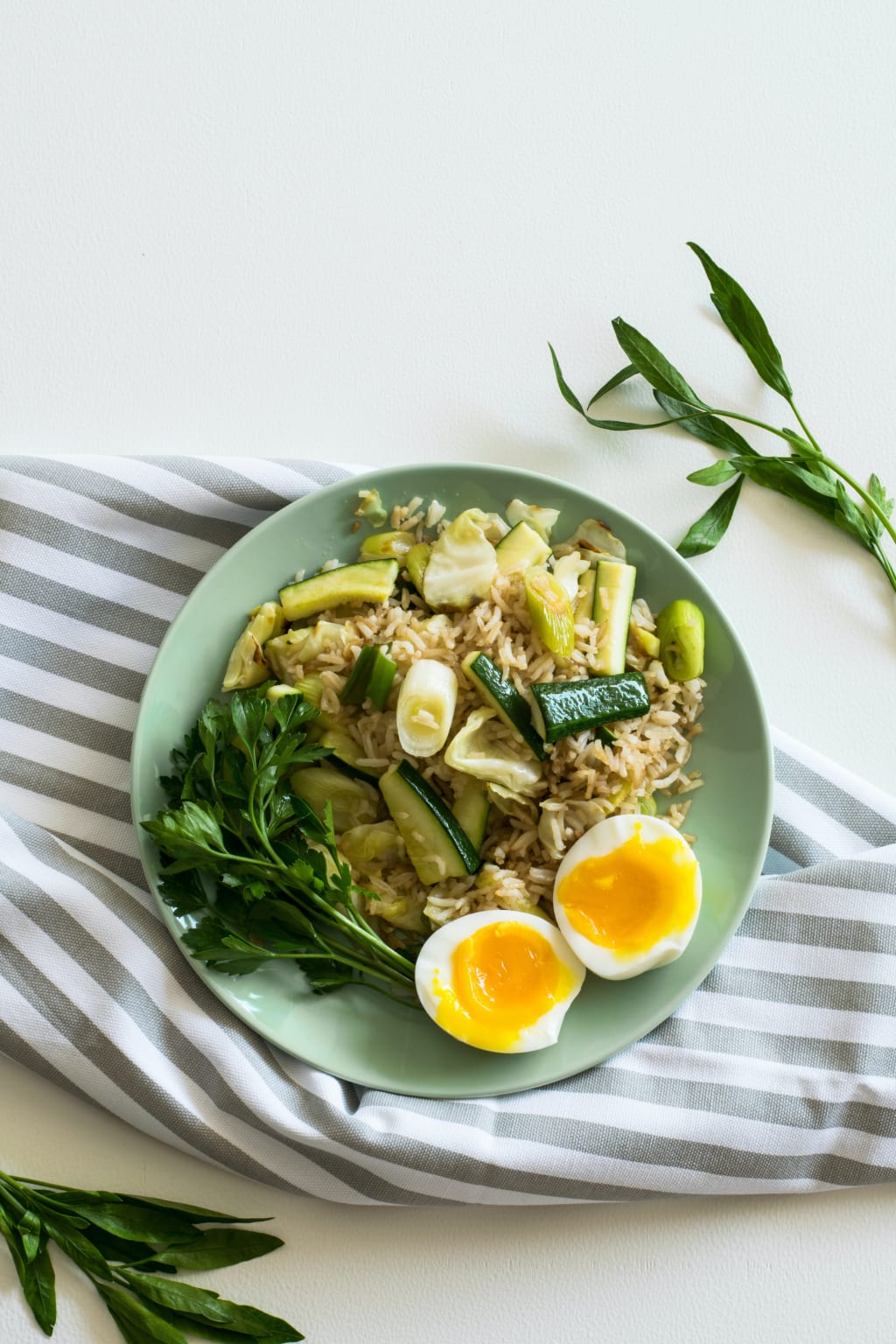To lose fat is the best meal plan.
A Practical Approach to Efficient Fat Loss

Article Outline
1. Introduction: Calories in vs. Calories out
2. The Importance of Food Choices
1. The Impact of Minimally Processed Foods
• Nutrient content and fiber
• The thermic effect of food
2. Comparing Unprocessed and Processed Foods
• Study on the thermic effect of food
• Benefits of choosing unprocessed foods
3. Swapping Processed Foods for Whole Grain Options
1. Benefits of Whole Grain Foods
• Higher nutrient content and fiber
• Enhanced satiety
• Increased thermic effect of food
2. Examples of Swaps
• Whole grain bread instead of white bread
• Oats instead of cereal
4. The Timing of Meals
1. Front-Heavy Distribution Approach
• Effects on hunger and cravings
• Increased energy levels
• Indirect fat loss benefits
2. Experimenting with Calorie Distribution
• Personal experience and benefits
• Adjusting for individual preferences and workout timing
5. Choosing Satiating Foods
1. Importance of Appetite Control
• The satiety index
• Calorie-for-calorie comparison
2. Incorporating Highly Satiating Foods
• Swapping whole grain bread for oats
• Substituting brown rice for whole grain pasta or boiled potatoes
6. Sample Meal Plan
1. Breakfast: Protein Pancakes
2. Lunch: Baked Salmon with Potatoes and Asparagus
3. Mid-Afternoon Snack: Orange and Protein Shake
4. Dinner: Baked Chicken Breasts with Roasted Veggies
5. Evening Snack: Greek Yogurt Parfait
7. Conclusion
8. FAQs
1. Can I still lose weight if I eat processed foods as long as I'm in a calorie deficit?
2. How can I determine the right calorie deficit for my weight loss goals?
3. Is it necessary to follow a specific meal timing pattern for fat loss?
4. Are there other satiating foods I can include in my diet?
5. What if I have dietary restrictions or preferences? Can I still follow this meal plan?
9. Get Access Now: https://bit.ly/J_Umma
________________________________________
If You've Read Any of My Past Nutrition Articles or Even Attempted a Diet of Your Own, Then You're Probably Aware of the Notion That at the End of the Day for Weight Loss It's All About Calories in Versus Calories Out
If you've read any of my past nutrition articles or even attempted a diet of your own, then you're probably aware of the notion that at the end of the day for weight loss it's all about calories in versus calories out. As long as you're eating at a calorie deficit and ideally having enough protein as well, then you're going to successfully lose weight and strip off fat regardless of what and when you eat.
Now, while scientifically speaking, this is true and it is the basic law of thermodynamics, what this simplistic model fails to account for is how the various foods you put into your body actually then go about affecting these two variables. Research has shown that while, yes, at the end of the day, calories are what matter most, if you want to truly lose fat as efficiently and as quickly as possible, then you need to go beyond just calories and instead pay close attention to the types of foods that make up the calories you're ingesting every day and also how you go about ingesting
Sample Meal Plan: A Practical Approach to Efficient Fat Loss
If you've read any of my past nutrition articles or even attempted a diet of your own, then you're probably aware of the notion that at the end of the day, for weight loss, it's all about calories in versus calories out. As long as you're eating at a calorie deficit and ideally consuming enough protein, you'll successfully lose weight and strip off fat, regardless of what and when you eat. While scientifically speaking, this is true and it is the basic law of thermodynamics, this simplistic model fails to account for how the various foods you put into your body actually affect these two variables.
Research has shown that while calories are what matter most, if you want to truly lose fat efficiently and quickly, you need to go beyond just calories. Paying close attention to the types of foods that make up the calories you ingest every day, as well as how you go about ingesting them, makes all the difference. In this article, we'll explore three dietary swaps that can help you lose fat faster, and I'll provide you with a sample meal plan that incorporates these principles.
Outline of the Article:
1. Introduction
• Importance of considering food types and eating patterns for efficient fat loss
2. Swap 1: Choose Minimally Processed Foods
• Benefits of unprocessed foods for weight loss
• The thermic effect of food and its impact on calorie burning
• Comparison of processed and unprocessed foods in terms of calorie burn
• Incorporating whole grain, less processed foods into your meals
3. Swap 2: Optimize Meal Distribution Throughout the Day
• Exploring the importance of meal distribution for fat loss
• Front-heavy approach vs. back-heavy approach
• Benefits of allocating more calories to breakfast
• Personal experience and anecdotal evidence
4. Swap 3: Select Highly Satiating Foods
• Understanding the role of food satiety in controlling appetite
• Introduction to the satiety index and its findings
• Calorie-for-calorie comparison of different food options
• Recommendations for incorporating satiating foods into your diet
5. Sample Meal Plan
• Providing a practical and delicious meal plan based on the discussed principles
• Breakfast: Protein pancakes made from minimally processed ingredients
• Lunch: Baked salmon, boiled potatoes, and sautéed asparagus
• Snacks: Orange and optional protein shake
• Dinner: Baked chicken breasts and roasted vegetables
• Dessert: High-protein Greek yogurt parfait with mixed berries
6. Conclusion
• Emphasizing the importance of adhering to a calorie deficit
• Encouraging experimentation with the suggested dietary swaps
• Promoting personalized meal planning and adherence for sustainable fat loss
Get Access Now: https://bit.ly/J_Umma
Article:
If you've read any of my past nutrition articles or even attempted a diet of your own, then you're probably aware of the notion that at the end of the day for weight loss, it's all about calories in versus calories out. As long as you're eating at a calorie deficit and ideally having enough protein as well, then you're going to successfully lose weight and strip off fat, regardless of what and when you eat. Now, while scientifically speaking this is true and it is the basic law of thermodynamics, what this simplistic model fails to account for is how the various foods you put into your body actually then go about affecting these two variables. Because research has shown that while, yes, at the end of the day calories are what matter most,
if you want to truly lose fat as efficiently and as quickly as possible, then you need to go beyond just calories and instead pay close attention to the types of foods that make up the calories you're ingesting every day and also how you go about ingesting those calories.
For example, one of the biggest factors that can affect your weight loss progress is the quality of the food you're consuming. Choosing minimally processed foods over highly processed foods can have a significant impact on your fat loss journey. Minimally processed foods, such as whole grains, lean proteins, fruits, and vegetables, tend to be more nutrient-dense and higher in fiber compared to highly processed foods like sugary snacks, refined grains, and processed meats. These nutrient-dense foods provide essential vitamins, minerals, and antioxidants that support overall health and wellbeing.
In addition, minimally processed foods have a higher thermic effect of food (TEF) compared to highly processed foods. TEF refers to the energy expenditure required for digestion, absorption, and processing of the nutrients in food. Studies have shown that the TEF of unprocessed, whole foods is generally higher than that of processed foods. This means that your body burns more calories during the digestion and metabolism of whole foods, leading to a higher overall energy expenditure.
Furthermore, swapping processed foods for whole grain options can be a game-changer in your fat loss journey. Whole grain foods, such as whole wheat bread, brown rice, oats, and quinoa, provide more nutrients and fiber compared to their refined counterparts. The higher fiber content of whole grains helps you feel fuller for longer, reducing the likelihood of overeating or snacking on unhealthy foods throughout the day. Additionally, the digestion and metabolism of whole grains require more energy, contributing to a higher thermic effect of food and potentially aiding in fat loss.
Here's an example of how you can incorporate whole grain swaps into your meals:
• Instead of white bread, choose whole grain bread for sandwiches or toast.
• Swap sugary cereals for a bowl of oats topped with fresh fruits and nuts.
• Opt for brown rice or quinoa instead of white rice as a side dish.
• Replace refined pasta with whole grain pasta or try spiralizer zucchini as a low-carb alternative.
Apart from the types of foods you choose, the timing of your meals can also play a role in optimizing fat loss. The front-heavy distribution approach involves allocating more calories to your earlier meals, particularly breakfast. Research suggests that front-loading your calories earlier in the day can help control hunger and cravings throughout the day, increase energy levels, and indirectly contribute to fat loss.
Personal experimentation with meal timing has shown positive results for many individuals. By front-loading calories earlier in the day, they experienced improved satiety, reduced evening snacking, and better adherence to their calorie goals. However, it's important to note that meal timing is not a one-size-fits-all approach. It's crucial to consider individual preferences, lifestyle factors, and workout timing when deciding on the best meal distribution pattern for you.
Another factor to consider for efficient fat loss is choosing satiating foods. The satiety index, a ranking of foods based on their ability to make you feel full and satisfied, can guide your food choices. Foods with a higher satiety index can help control appetite and prevent overeating, leading to better weight management.
Incorporate highly satiating foods into your meals, such as:
• Swap whole grain bread for oats in your breakfast to increase fiber and satiety.
• Substitute whole grain pasta or boiled potatoes for white pasta or processed grains.
• Opt for lean proteins, such as chicken breast, fish, or tofu, which are more satiating compared to fatty meats.
About the Creator
Enjoyed the story? Support the Creator.
Subscribe for free to receive all their stories in your feed. You could also pledge your support or give them a one-off tip, letting them know you appreciate their work.





Comments
There are no comments for this story
Be the first to respond and start the conversation.